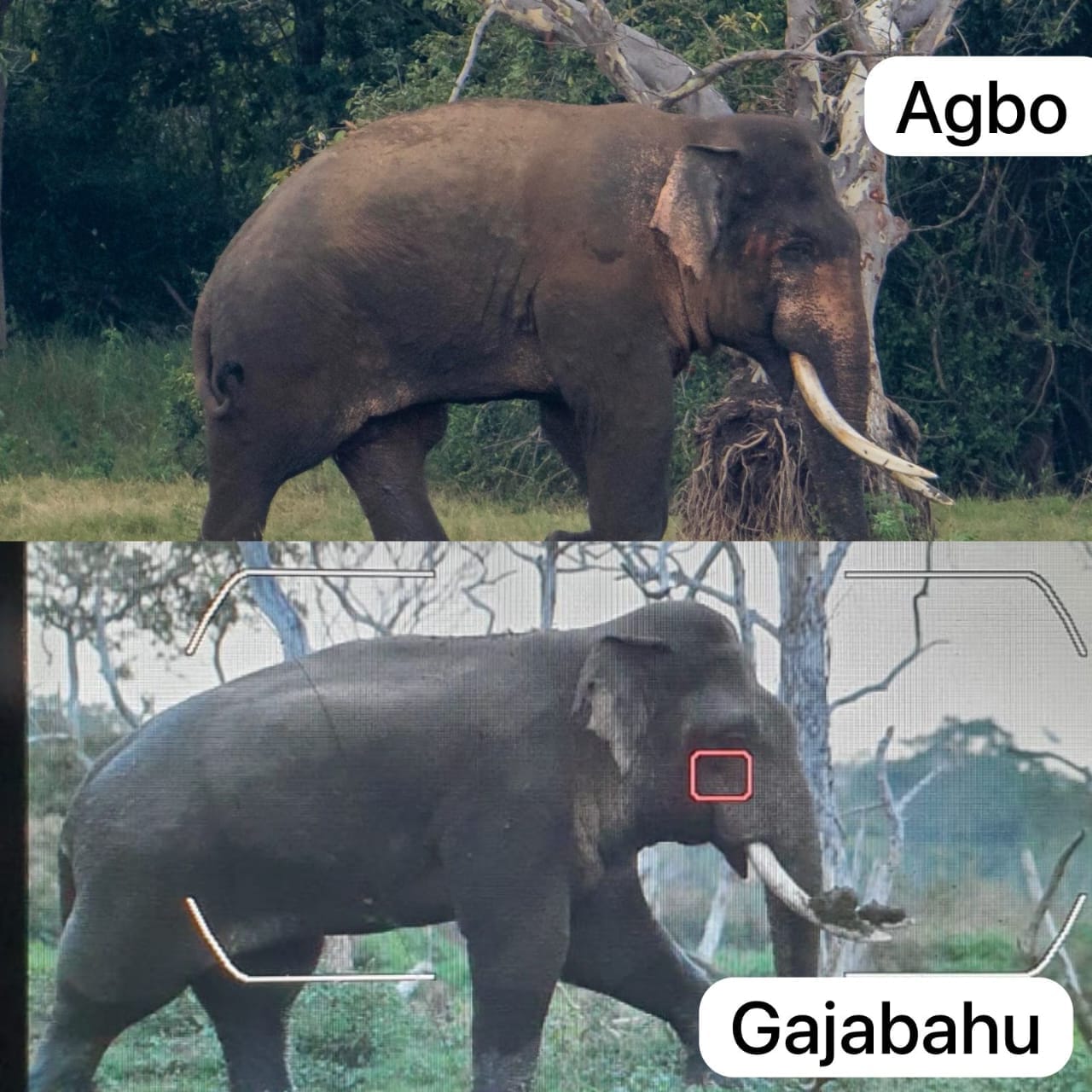Who are Gajabahu and Agbo
Let's properly identify these two amazing elephants who even deceive experienced wildlife photographers with their close resemblance.
"Agbo" and "Gajabahu" are so alike that it's difficult to distinguish between the two. Their physical features are almost identical, and if you saw them together, you'd think they were elephant brothers born to the same mother.
However, their habitats and roaming areas are different. Let's explore a little about these two."
Tusker "Agbo" T- 096
When comparing Agbo and Gajabahu, the features that distinguish Agbo are: a broader forehead where the tusks diverge, a slight hump on his back, numerous bullet-like marks on his body, a spread-out dewlap and ear flaps, and a relatively flat "moolliy" (a specific marking on the forehead that resembles the number 3).
Before falling ill, Agbo's roaming area was mainly in the Thirappane, Mahakanadarawa, and Horowpatana regions. He was a powerful and very handsome tusker, though he could also be quite aggressive. Now, his range is limited to the Thirappane area.
ID - T232
Name - Gajabahu
First Recorded Year 2021 (Padaviya/Wahalkada/Kabithigollewa)
First recorded and named by Priyanjana Dilmith Wild Photography
Gajabahu can be distinguished from Agbo by his relatively slender forehead compared to the broader forehead where Agbo's tusks diverge. Gajabahu is slightly taller and longer than Agbo. His ear flaps and dewlap have a clear, uniform pattern. Unlike Agbo, Gajabahu doesn't have a hump on his back but a longer spine. His skin is slightly darker than Agbo's. Additionally, Gajabahu doesn't have the bullet-like marks found on Agbo's body and exudes a strong, sturdy demeanor when walking. Gajabahu's roaming area is around the forests of Padaviya, Wahalkada, and Kabithigollewa.
You've outlined some striking similarities between Agbo and Gajabahu
- 90% similarity: This suggests a very high degree of resemblance between the two elephants.
- Tusks: The position, size, and shape of their tusks are nearly identical.
- Ears: The way their ears are folded is quite similar.
- Forehead: The length of their foreheads and the position of their temples are almost the same.
- Body: Their overall height and weight are very similar.







No comments:
Post a Comment